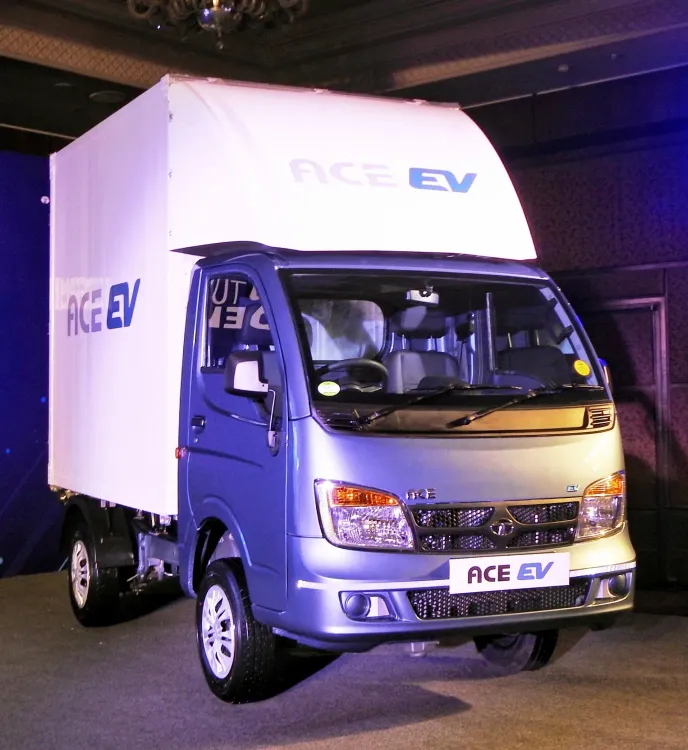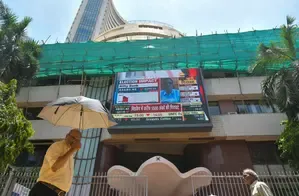Growth in India's Commercial Vehicle Sales Anticipated for FY2025-26: Report

Synopsis
Key Takeaways
- 3-5% growth in commercial vehicle sales projected for FY26.
- Recovery signs following a flat FY2025.
- Resumed construction and infrastructure activities as key growth drivers.
- Replacement demand due to ageing fleets.
- Electric vehicles gaining traction in bus segment.
New Delhi, March 10 (NationPress) The wholesale volumes of the domestic commercial vehicle (CV) sector are projected to achieve a year-on-year increase of 3-5 percent in FY26, indicating signs of recovery, as per a report released on Monday.
This growth follows an estimated flat volume trend in FY2025, which was impacted by a decline in demand during the first half of the fiscal year due to the Lok Sabha elections, according to an ICRA report.
Kinjal Shah, senior vice president at ICRA, commented on the industry's outlook, stating: “The resumption of construction and infrastructure projects, along with stable rural demand and increased replacement sales due to ageing fleets and government mandates, are likely to drive this volume growth towards the end of FY2025 and into FY2026.”
ICRA believes that the long-term growth factors for the domestic CV sector will remain robust. The ongoing emphasis on infrastructure development, reflected in the higher capital outlay in recent budget allocations, a steady increase in mining operations, and enhanced road and highway connectivity, are expected to bolster volumes in the future.
The demand for replacements will also stay strong, primarily because of the ageing fleet, which is estimated to be around 10 years for medium & heavy commercial vehicles (M&HCVs), and is expected to contribute to industry volume growth in the medium term, as stated in the report.
Among different sub-segments, the wholesale volumes for M&HCV (trucks) are anticipated to grow by up to 3 percent YoY in FY2026, following a period of flat growth or slight contraction in FY2025.
A resurgence in construction and infrastructure projects is expected to support this modest year-over-year volume increase in FY2026. The segment experienced a 7 percent YoY decline during the April-December phase of FY2025, with tipper volumes contracting by 11 percent YoY, and both the haulage and tractor-trailer sub-segments witnessing a 5 percent YoY decline each.
Wholesale volumes for the domestic light commercial vehicles (LCV) (trucks) are forecasted to see a modest 3-5 percent YoY increase in FY2026, after reporting a flat growth or slight contraction in FY2025.
The revival of infrastructure and construction activities, along with an improving economic climate, are expected to be the main drivers for this segment's growth in FY2026. The segment recorded a 3 percent YoY drop in the first nine months of FY25, primarily due to factors such as a high base effect, ongoing slowdown in e-commerce, and competition from electric three-wheelers (e3Ws).
The scrapping of older government vehicles has been stimulating replacement demand for buses from state road transport undertakings (SRTUs). This is predicted to lead to an 8-10 percent YoY growth for the bus segment in FY2026, following an expected 11-14 percent YoY increase in FY2025, thus surpassing the historic high volumes of FY2013 in FY2025.
In terms of powertrain composition, traditional fuels (mainly diesel) continue to dominate the domestic CV landscape, accounting for 88 percent in YTD FY2025, while alternative fuels (CNG, LNG, and electric) make up the remainder. Notably, a higher penetration of electric vehicles (EVs) has been observed in the bus segment, with a 5 percent penetration in YTD FY2025, as reported.
The establishment of dedicated freight corridors (DFCs) will contribute additional capacity to the railway network -- while ICRA expects DFCs to mainly affect container traffic on the Western corridor, other road traffic is anticipated to remain relatively unaffected.
Rising freight rates are likely to bolster the industry's demand outlook. Although delinquencies for both new and used CV portfolios have decreased from their peaks during the pandemic and have remained stable over the past four quarters, their ongoing movement will be an important factor to monitor, as the report highlighted.










